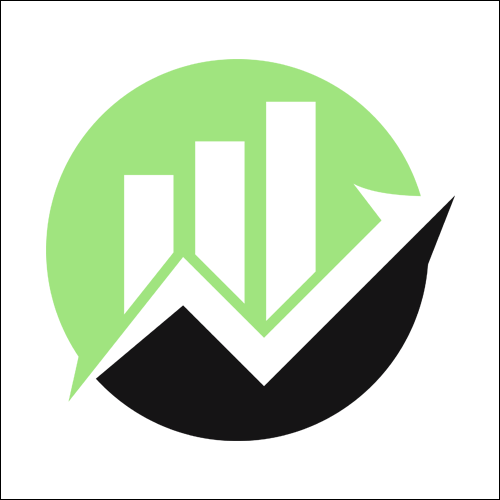On LinkedIn, nothing happens until someone sees your content. Impressions are the foundation of visibility, they tell you how often your posts, comments, or profile are shown to others across feeds, searches, and notifications.
Without impressions, your message never even enters the room, let alone makes an impact.
In this guide, you’ll learn what LinkedIn impressions actually measure, how to increase them without relying on luck or spam tactics, and why they’re only one piece of your performance puzzle.
What Are LinkedIn Impressions?
A LinkedIn impression is counted every time your post, ad, or profile appears in someone’s feed, search results, or notification panel, even if the same person sees it more than once. Think of impressions as raw visibility rather than unique viewers; they tell you how often content surfaces but not how many individuals saw it.
That makes impressions a leading indicator of reach but not a guarantee of engagement. For creators, recruiters, and brands alike, high impressions signal that the algorithm is granting valuable shelf space.
Visibility alone doesn’t equal influence, yet it sets the stage for clicks, comments, or conversions to happen. Industry data shows the typical brand averages about 8.6 impressions per 100 followers on each LinkedIn post, underscoring how limited feed real estate can be.
Tracking this metric helps you gauge whether your content and posting cadence resonate with the platform’s ranking signals. By pairing impression counts with engagement and conversion data, you can decide when to double down on a content format, or pivot before audience fatigue sets in.
Viewability Rate: What It Is and How to Measure It
Viewability tracks the share of ads that actually reach a viewer’s screen, turning vague impression totals into a precise read on real exposure. Media buyers use the metric to pinpoint placements that drive genuine attention instead of loading off-screen.
A strong viewability rate shows your creative, site partners, and page layout are working together to put ads where eyes can see them.
Start by counting your viewable impressions—ads that were at least 50 % visible for one full second, or two seconds for video. Next, divide that figure by your total measurable impressions and multiply by 100 to express the result as a percentage you can compare across campaigns.
This calculation filters out wasted inventory, uncovers under-performing slots, and reassures stakeholders that budgets chase verified eyeballs.
Viewability Formula: Viewability Rate (%) = (Viewable Impressions ÷ Measurable Impressions) × 100
Organic Impressions
Organic impressions tally each unpaid appearance of your content in LinkedIn feeds, searches, or notifications. They rely on your existing network, timely engagement, and the platform’s ranking signals rather than ad spend.
Strong organic reach proves your posts resonate on merit, building credibility and authority over time.
Benefits
- Cost Efficiency – No media budget is required, so every view accrues at negligible expense. Over time, this compounding visibility can rival mid-sized ad campaigns, with some SaaS brands reporting 388% ROI from organic LinkedIn organic content. Savings free up resources for creative production or community building.
- Authentic Engagement – Reactions and comments come from first- or second-degree connections who already trust you. This familiarity lifts click-through rates and strengthens brand sentiment. Authentic interactions often convert better than paid clicks.
- Algorithm Momentum – Early likes and comments trigger LinkedIn’s feed prioritization, extending post lifespan. Each interaction signals relevance, prompting the algorithm to resurface the content. Consistency trains the system to promote future posts faster.
- Relationship Nurturing – Frequent organic touchpoints keep your name top-of-mind without feeling pushy. Regular visibility turns acquaintances into advocates through gradual familiarity. Warmer audiences reduce friction for future offers or collaborations.
- Evergreen Discovery – High-value posts can regain traction weeks later as new users react or share. This long-tail effect delivers steady impressions long after publish day. Continuously refreshed awareness amplifies ROI on a single piece of content.
Limitations
- Scale Ceiling – Reach rarely extends beyond second-degree networks without outside amplification. Growth plateaus once immediate circles saturate. Brands seeking rapid awareness must combine organic with paid or viral tactics.
- Algorithm Volatility – Feed updates can drop visibility overnight, independent of content quality. Sudden shifts force reactive strategy changes. Dependence on algorithm favor introduces forecasting risk.
- Audience Fatigue – Over-posting can overwhelm followers, lowering engagement rates. Diminished interactions teach the algorithm to demote new updates. Balanced cadence planning becomes crucial to sustain reach.
- Slow Feedback Loop – Organic data accumulates gradually, delaying insights on what resonates. Iteration cycles lengthen, which can hinder time-sensitive campaigns. Marketers must rely on patience and historical benchmarks.
- Limited Demographic Detail – Native analytics provide broad overviews rather than granular segment data. Precise audience breakdowns require external tools or paid campaigns. Decision-making leans on trend patterns instead of exact cohorts.
Paid Impressions
Paid impressions register whenever a sponsored post, InMail, or display ad renders in targeted users’ feeds or inboxes. Delivery is guaranteed by budget and bid, not algorithmic luck, making visibility predictable and scalable.
This route accelerates brand awareness beyond the confines of your existing network.
Benefits
- Precise Targeting – LinkedIn’s ad platform allows detailed audience segmentation by role, seniority, industry, geography, and company size. This targeting precision minimizes wasted impressions and increases cost-efficiency for B2B campaigns.
- On-Demand Scalability – Ad budgets can scale instantly to match campaign urgency, reaching thousands or millions with no lead time. Built-in tools let marketers reallocate or pause spend in real time to match changing market demands.
- Rapid Data Feedback – Performance metrics like CTR, engagement, and conversion rates appear within hours of campaign launch.
- Clear Attribution – LinkedIn Campaign Manager maps each impression to clicks, form fills, and pipeline outcomes. Marketers gain clear visibility into ROI, making performance reporting and budget justification easier.
- Algorithm Immunity – Paid placements retain visibility regardless of organic feed shifts or algorithm updates. This guarantees consistent exposure, especially critical during launches or high-stakes announcements.
Limitations
- Budget Dependency – Ad visibility ends the moment your campaign spend runs out, unlike organic content which can linger and resurface. This creates a hard stop in reach unless spend is maintained continuously.
- Cost Volatility – In high-demand verticals, CPMs and CPCs can spike unpredictably due to bidding wars and increased competition. Without daily bid oversight, campaign costs can quickly surpass ROI thresholds.
- Creative Fatigue – Audiences may disengage if exposed to the same creatives repeatedly, lowering ad effectiveness over time. Regular asset updates and frequency capping are necessary to sustain performance
- Perceived Intrusiveness – Sponsored posts are more likely to be ignored, skipped, or hidden by users compared to organic content. Campaigns must lead with value to avoid reflexive scrolling or negative brand perception.
- Policy & Review Delays – Ads must clear LinkedIn’s compliance checks, and any rejection stalls launch timelines. Regulated industries face stricter scrutiny. Last-minute edits can derail time-sensitive campaigns.
For campaigns that blend organic and paid tactics, HubSpot’s CRM with integrated marketing and analytics tools lets you track impressions, clicks, and conversions in one place. Tie LinkedIn exposure directly to pipeline progress with clean attribution.
Need Help Writing LinkedIn Posts That Actually Get Seen? Use HelperX Bot to generate impression-boosting LinkedIn content. Whether it’s poll ideas, headline hooks, or strategic hashtags, this AI assistant helps you cut through the feed clutter with precision.
Tools for Measuring Impressions on LinkedIn
Tracking impressions is only useful if the data is accessible, actionable, and accurate. These tools help you measure visibility across organic, paid, and viral content so you can refine your strategy with confidence.
1. LinkedIn Analytics (Native Dashboard)
LinkedIn’s built-in analytics offers real-time data on post impressions, profile views, engagement, and follower growth. It’s available on both personal profiles and company pages, making it the go-to source for day-to-day visibility tracking.
You can filter data by time range and content type to spot performance trends. It’s limited in demographic depth, but highly reliable for surface-level insights.
2. LinkedIn Campaign Manager
Campaign Manager powers paid impression tracking for sponsored posts, display ads, and InMail. It breaks down impressions by audience segment, placement type, and engagement outcomes like clicks and conversions.
You can compare performance across A/B creatives and set benchmarks by campaign goal. For impression-focused advertising, it’s LinkedIn’s most detailed reporting tool.
3. Shield Analytics
Shield is a third-party analytics platform built specifically for LinkedIn personal profiles. It tracks impressions, engagement rate, content types, and growth patterns over time with visual clarity.
Unlike LinkedIn’s native view, Shield gives you trend insights and filters across multiple metrics in one place. It’s ideal for creators, consultants, and solopreneurs focused on organic performance.
4. Hootsuite
While primarily a scheduling tool, Hootsuite also offers LinkedIn analytics for impressions, reach, and post engagement. It integrates LinkedIn data alongside other platforms, giving marketers a centralized performance dashboard.
You can generate reports and compare post-level metrics without toggling across tabs. It’s best for teams managing multiple accounts or channels who need high-level visibility.
Proven Tactics to Maximize LinkedIn Impressions
Visibility grows when you align content quality, timing, and engagement with the platform’s ranking signals. Apply these targeted moves to push posts beyond your immediate network and capture more feed space.
1. Post High-Value Content Consistently
Share insights, case studies, or data-backed tips that solve audience problems or spark discussion. Consistent value trains followers to engage quickly, which the algorithm interprets as relevance.
Faster early engagement extends a post’s lifespan and reach. Plan a cadence of two to four strong posts weekly instead of daily filler.
Pro Tips: Save top-performing posts and repurpose them with new angles every 4–6 weeks.
2. Diversify Content Formats
Mix text posts, images, carousels, polls, and short videos to appeal to different consumption preferences. LinkedIn’s algorithm rewards variety by surfacing formats that boost dwell time and interaction. Carousels and polls typically hold attention longer, driving more impressions. Analyze format-level data to double down on your top performers.
Pro Tips: Rotate formats weekly to train the algorithm without overwhelming your audience.
3. Engage Proactively in Comments
Respond to every meaningful comment within the first hour to keep conversation threads active. Each reply bumps the post back up in followers’ feeds, adding fresh impressions. Tag relevant contributors to invite further dialogue and expand reach to their networks. Genuine back-and-forth boosts credibility and algorithmic favor.
To turn impressions into leads, combine post visibility with outreach. Snov’s email prospecting and lead generation suite helps you follow up with viewers, engage new connections, and convert LinkedIn traction into warm leads automatically.
Pro Tips: Reply within the first 30 minutes to boost early traction and visibility.
4. Optimize Post Timing
Publish when your audience is most active, typically early weekday mornings or lunchtime in their local time zone. Posts released during peak scroll windows accumulate reactions faster, signaling momentum to the feed.
Use LinkedIn’s analytics or third-party tools to pinpoint optimal slots by region and seniority. Adjust scheduling quarterly as audience habits shift.
Scheduling is key to maximizing LinkedIn visibility. Tailwind’s smart scheduling and analytics platform helps pinpoint optimal posting times while simplifying your content calendar.
Use it to align posts with peak engagement windows and get more impressions without manual guesswork.
Pro Tips: Test your top two time slots per week and double down on the higher-performing one.
5. Use Strategic Hashtags and Mentions
Select three to five niche-relevant hashtags to slot posts into topical feeds without appearing spammy. Include @mentions of companies or influencers who add context or value to the discussion. This practice triggers notifications and exposes content to secondary networks. Track hashtag performance to refine your list and avoid overcrowded tags.
Pro Tips: Prioritize hashtags with under 500k followers to increase discoverability.
Final Word: Turn Visibility Into Real Results
LinkedIn impressions reveal how often your content enters the conversation, making them the bedrock of awareness. Mastering organic, paid, and viral reach means tailoring posts to the algorithm, timing, and audience intent. When visibility aligns with value, engagement and authority follow.
Keep refining strategy through consistent posting, diversified formats, and rapid engagement feedback. Track impressions alongside click-through, conversions, and quality leads to confirm progress. Iterate on what works, retire what stalls, and your feed space will turn into measurable business impact.
Turn Visibility Into Engagement on LinkedIn. Craft LinkedIn posts that earn impressions and responses. Let HelperX Bot assist you with post formatting, timing strategies, and value-driven hooks to help you stand out—without sounding salesy.
Frequently Asked Questions
Reviewing your impression data weekly offers a clear picture of trends without overreacting to daily fluctuations. Weekly snapshots let you spot overall growth, test timing changes, and adjust strategy before monthly campaigns launch, while preventing data overload from constant checking.
Yes, LinkedIn adds impressions generated in hashtag feeds, group discussions, and search results to your total count. This means a post can accumulate visibility beyond connections, so using targeted hashtags and occasionally sharing into relevant groups can expand organic reach efficiently.
Deleting a post stops it from gathering further impressions but does not erase those already recorded in LinkedIn analytics. Historical numbers remain visible in your dashboard, allowing you to evaluate why the content underperformed or garnered unwanted attention before removal.
Source:
- https://www.rivaliq.com/blog/linkedin-benchmark-report/
- https://www.meetassembly.com/blog/linkedin-ads-vs-organic-content-which-strategy-wins
- https://arxiv.org/abs/2111.02334
- https://www.socialinsider.io/social-media-benchmarks/linkedin

We empower people to succeed through information and essential services. Do you need help with something? Contact Us.
Want a heads-up once a week whenever a new article drops?







